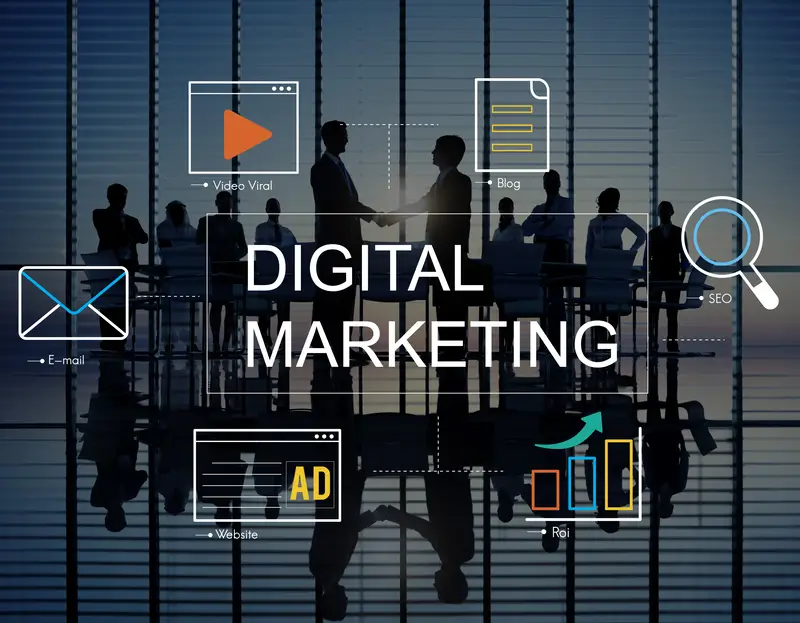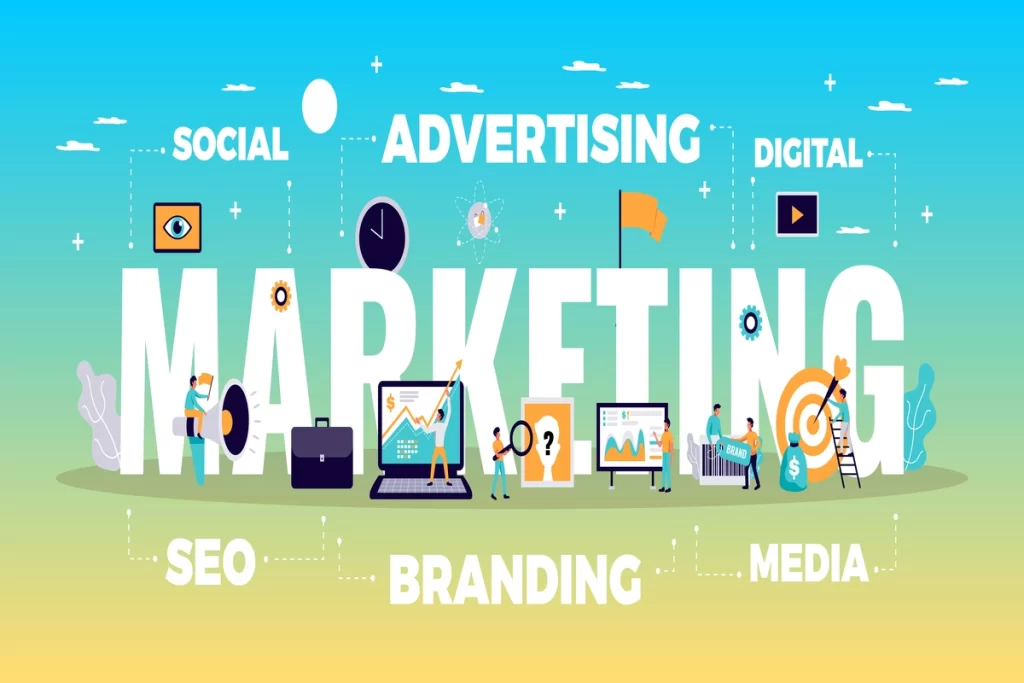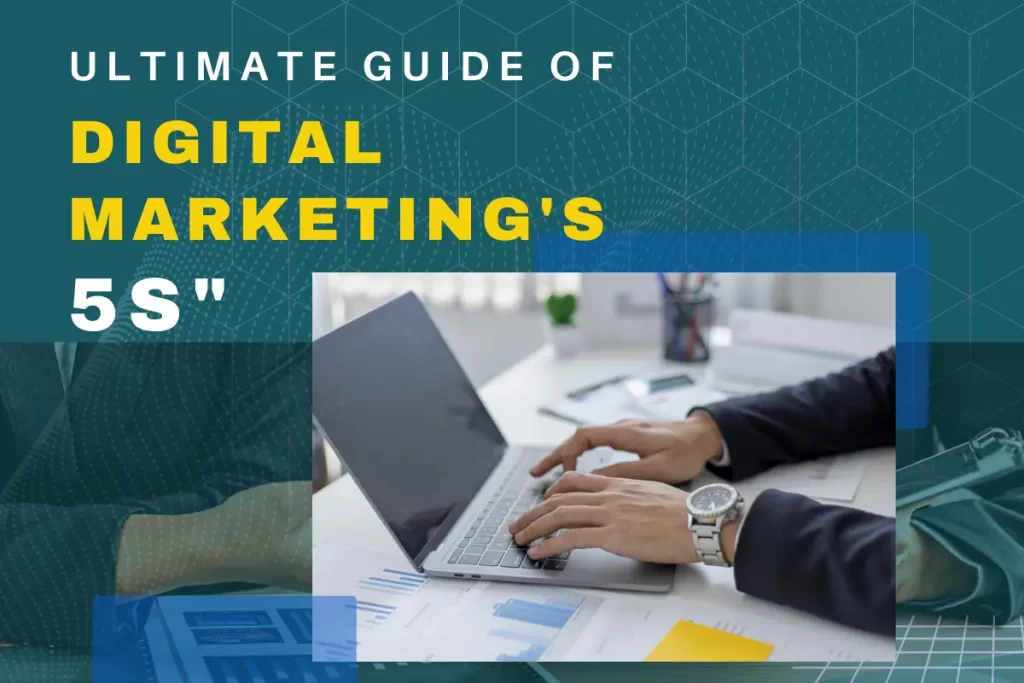It is surprising to know that those who go online every day are on the rise. How accessible is the internet today? Consider a world in which more people are going online every day; by 2023, there will be approximately 5.3 billion internet users worldwide. The use of mobile devices will increase threefold. Now that you consider the power of digital marketing, why is this a game-changing era?
What is Digital Marketing? A Detailed Introduction
Are you nasty because of explosive marketing techniques? Let me explain!
Digital Marketing is the use of the internet, mobile devices, social media, search engines, and other channels to reach consumers. It involves creating and sharing content that is valuable to your target audience, as well as advertising products or services that are relevant and useful to them.
Some common tactics used in digital marketing include search engine optimization (SEO), content marketing, social media marketing, email marketing, pay-per-click (PPC) advertising, and affiliate marketing. Digital marketing allows businesses to reach and engage with consumers online, where they spend much of their time.
Digital marketing provides more tactics and analytics about your customers. You will be able to know how they navigate the buying cycle and what they want. It is an effective way to build brand awareness, drive traffic to your website, generate leads, and make sales.
Marketing—Online and Offline Pillars:
You can market your company via both offline and online channels.
Then why online?
Let’s Read! During COVID-19, in the pandemic situation, most businesses shifted from offline to online.
Digital gadgets are popular among people. That is why the majority of people spend their time on the internet and enjoy online shopping. They want to buy and sell products online. Therefore, digital marketing is in demand.
Online and digital marketing are now popular. Only those businesses could survive who’s in an online presence. And it all goes through branding.
Right! Digital marketing is an untapped system of promoting services or products through digital channels. Digital marketing can help you get explosive results for your business.
Types of Digital Marketing

SEO
SEO(Search Engine Optimisation): This involves optimizing your website and its content to rank higher in search engine results pages for relevant keywords.
Pay-Per-Click (PPC)
This is a form of advertising where you pay each time someone clicks on one of your ads.
Social Media Marketing:
This involves using social media platforms, such as Facebook, Twitter, and Instagram, to promote your brand and engage with your customers.
Email marketing:
This involves using email to send targeted messages to a list of subscribers in order to promote your brand, products, or services.
Content Marketing:
This involves creating and distributing valuable, relevant, and informative content in order to attract and retain customers. Get a detailed overview of digital marketing and content writing here!
Influencer Marketing:
This involves partnering with social media influencers to promote your brand or products to their followers.
Affiliate Marketing:
This involves promoting products or services from other companies in exchange for a commission on each sale.
Video Marketing:
This involves using video to promote your brand, products, or services.
Mobile Marketing:
This involves using mobile apps, SMS, or other mobile channels to reach customers.
Display Advertising:
This involves using banner ads or other forms of visual advertising to reach customers on websites or social media platforms.
Process of Marketing: Does Business Helps to Thrive Through Digital Marketing
The process of marketing involves identifying the needs of the target market, developing a plan to meet those needs, implementing the plan, tracking and measuring the results, and adjusting the plan as needed.
You can get bullet-proof, time-tested strategies to nail strengthen in your market if you follow all proven strategies and will evaluate the marketing process.
The success of any company depends on the right marketing tactics. It is a strategic plan that assists in recognizing the company and business while meeting financial objectives.
The marketing process is as follows:
- Identification of need
- Objectives and goals of a specific industry
- Identify the target audience and learn about their needs and desires.
- Developing products and services
- Implement the right marketing tactics.
- Marketing plans to adjust and monitor
Benefits of Digital Marketing

Can you imagine what it would be like to discover the secrets of digital marketing that could help your business? Let’s discover the secrets and benefits of digital marketing to nail the market and run your business into raving demand.
Cost-effective: Digital marketing is generally more cost-effective than traditional marketing. This is because it allows you to reach a larger audience at a lower cost.
Measurable: Digital marketing provides a lot of data that can be tracked and measured. This allows you to see what is and isn’t working and make changes as needed.
Targeted: Digital marketing allows you to target specific audiences, which means you can reach the people who are most likely to be interested in your products or services.
Real-time results: With digital marketing, you can see the results of your efforts almost immediately. This allows you to make quick adjustments to your marketing strategy as needed.
Personalization: Digital marketing allows you to personalize your marketing efforts to better reach and engage individual customers.
Greater reach: Digital marketing allows you to reach a wider audience than traditional marketing methods.
Increased customer engagement: Digital marketing allows you to interact with your customers in real-time, which can help increase customer engagement and loyalty. You can achieve your goals more quickly than ever before, by utilizing digital marketing.
How Does Digital Marketing Help in Business Growth?
Looking to grow your business and attract more customers? The best solution is to target customers with search demand.
In this article, we will reveal the secret to expanding your business from home with digital marketing. So, Keep it Up!
Digital marketing efforts can help drive more traffic to a business’s website, which can lead to increased sales and revenue. Also, help businesses generate leads through channels such as email marketing and social media advertising.
Digital marketing can help increase a business’s visibility and reach, which can lead to increased brand awareness and recognition.
It Increased customer acquisition by targeting specific audiences and personalizing its marketing efforts. Businesses can effectively acquire new customers through digital channels.
Digital marketer experts help to increase customer retention. By using digital marketing they build relationships with customers and provide them with a positive brand experience. So, businesses can increase customer retention and loyalty.
Marketer specialists could increase sales and revenue. Ultimately, the goal of digital marketing is to drive sales and increase revenue for a business. By effectively reaching and engaging with customers through digital channels, businesses can achieve this goal with the help of expert marketers.
Marketing will get effective consumer engagement. Customers are engaged with creativity, where they build strong relations. So, building and maintaining a reputation also builds strong relations between customers and businesses. Now, effectively it will boost your sales.
As every business has many how and why about services or products or delivering services. The importance of marketing is the impact on the business which links business to society.
Marketers will analyze and evaluate proven tactics of business. So, make informed decisions to get the ultimate revenue for the business.
Now, I’m sure you get the answer to how digital marketing helps businesses to grow.
B2B, B2C, C2B & C2C in Marketing
B2B Marketing
It refers to business-to-business marketing. B2B marketing is done within companies; they’re selling their goods or services to another business or organization.
B2C Marketing
It refers to business-to-consumer marketing. It is a direct-selling model of the product or service to a consumer.
C2B Marketing
It refers to a consumer-to-business model, in which a consumer or end user provides the service or product to a business or organization. It involves customer feedback, soliciting, and more.
C2C Marketing
It refers to customer-to-customer marketing or consumer-to-consumer marketing. Consumers interact with co-consumers. It involves the business models of Etsy, eBay, and Craigslist, which promote commerce within private households or among individuals.
If you’re interested in starting your business, get an expert consultation from Manoz.
Digital Marketing VS Traditional Marketing
Traditional marketing is the use of offline media such as billboards, TV commercials, newspapers, and other print advertisements.
Digital marketing is the use of digital media to promote services or products by using the channels that people are already engaged with. Businesses invest in developing websites and promoting their brands on social media platforms such as YouTube, Facebook, and others.
Pros of Traditional Marketing:
By doing traditional marketing, it’s easy to target a local audience. For example, radio, a type of traditional marketing, target the local audience because it plays in your own city or region. Traditional marketing may appear that door-to-door sales or sponsorship are simple.
Print ads serve as hard copies of the material you provide to your audience. The metrics of traditional marketing evaluated by resources are motivation, attention, and cognition. These ways of marketing are more memorable and understandable. People can browse through this media over and over again.
Cons of Traditional Marketing:
Despite all of its advantages, traditional marketing has several drawbacks. It provides information to the public but is not measured. Also, it is very costly. Because all of the printing materials are very expensive, the distribution itself is a costly and time-consuming activity. Even though you didn’t know, was your campaign successful or not?
It is not the best for branding. Also, it takes time to get results. Customer satisfaction suffers as a result of one-way communication.
Pros of Digital Marketing:
Without a digital presence, it is difficult to reach the countless opportunities that your business deserves. Digital marketing has a higher return on investment, which means higher revenue.
It is easy to target both an international and local audience.
Targeting specific gender, location, age, and interest groups are simple with digital marketing. So, the campaign is more effective and gets instant results. Allow the audience to choose what they want.
One group wants to read blogs rather and others want to watch YouTube videos, while one specific group wants to spend their time on Facebook and is interested in social media.
Here, digital marketing works. They show your ads, videos, and blogs to your targeted audience. as it is easy to evaluate consumers’ behavior.
Digital marketing is not cost-effective as traditional marketing. You can achieve your goals by utilizing tried-and-true marketing techniques. It is simple to adapt. You can see Google Analytics and insight tools, which almost all social media channels provide. You can also check campaigns whenever you want.
It is a type of fast marketing used to build brands and promote products or services.
It has a global reach, which makes it efficient. Not to mention the two-way communication. That leads to more customer satisfaction.
Digital marketing has totally changed the map of marketing. Any business’s online presence raises awareness and adds credibility to the company.
Cons Of Digital Marketing:
Digital advertisements may be considered annoying, but they appear to be less permanent. People who do not like your ad may disclose it.
Conclusion: Which one is better?
Although traditional marketing relies on TV and radio advertisements, newer strategies are much more productive. There are many creative minds on the market; people are hooked on the effectiveness of these platforms and willing to spend their time online.
There are many creative ways coming forward today. So, choosing the digital marketing route for your brand is very effective and will turn it into a profitable business.
But both have their own value. Both channels will work for you if you know what your audience wants.
Inbound & Outbound Marketing
Inbound Marketing
Inbound marketing means creating useful and relevant content to attract prospects. The inbound marketing strategy attracts people by creating valuable, helpful, and relevant content for their users.
It is marketing through organic means. like sharing the links with others you may know, like in a friend circle.
You may want to know how! Let me tell you.
A blog has a large readership. This is becoming increasingly popular. Now, the blogger will talk about his favorite products and services on his blog. This post does well in a way that any banner or ad can’t. This is the essence of inbound marketing and strategy, and it must be incorporated into your marketing strategy.
Outbound Marketing
Outbound marketing is a form of traditional marketing; through it, a company or business initiates the conversation and interacts with an audience to generate leads and potential customers.
Let me tell you how!
Cold calling, emails, billboards, TV and radio advertising, print media, and in-person contact are all examples of outbound marketing. Even sponsorships are obtained through events.
The 5Ds of Digital Marketing
To Understanding Digital Marketing’s 5Ds stay tuned!
Digital marketing is an important part of modern business and can be broken down into the 5 Ds: devices, data, distribution channels, dynamics, and design.
Digital marketing is an important part of modern business, and it can be broken down into the 5Ds: devices, data, distribution channels, dynamics, and design.
Devices: refer to the various platforms used for digital marketing, such as computers, tablets, and phones.
Data: refers to customer behaviors that provide insights to help target campaigns in order to maximize conversions.
Distribution channels: are essential for getting content out there, including social media platforms like Facebook or YouTube, search engines like Google or Bing, or even email newsletters or push notifications from apps, with each channel offering its own set of pros and cons in terms of engagement, reach, cost efficiency, etc.
Dynamics: cover all aspects related to targeting customers, including segmentation based on demographics and psychographics such as interests and beliefs; personalization features built into displays and communications; tracking user behavior via cookies or other methods across sites for remarketing purposes; and creating engaging experiences using behavioral economics techniques like gamification, etc.
Design: covers visual elements such as website designs, which must not just look attractive but also be optimized so they perform well across devices while being intuitive enough that users don’t struggle to navigate them. All these factors play key roles in defining success when it comes to digital marketing efforts.
To Sum Up
Mastering the 5Ds of digital marketing requires a combination of skill sets ranging from creativity and design acumen to coding expertise, analytics prowess, and implementation skills, depending on which area one focuses on within this discipline. Understanding all the complexities involved in creating effective digital campaigns requires deep knowledge across all five domains, making mastery key for businesses that want to deliver successful outcomes via their online initiatives.


